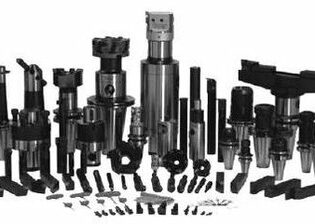A good mechanical process engineer must be a good processing equipment application engineer. He has a very accurate and full understanding of the types of processing equipment, processing scope, structural characteristics and processing accuracy of various processing equipment in the mechanical industry, and can also combine with his own In the specific situation of the company’s equipment, make reasonable equipment layout and arrangement for various processing parts and processing procedures, understand their processing advantages and disadvantages, and can make good use of their strengths and avoid weaknesses to coordinate the company’s mechanical processing work. Now, we will make a general analysis and understanding of several processing equipment commonly used in the mechanical processing industry, so that we can have a relatively clear and clear definition of the processing equipment in this industry from the perceptual point of view, and at the same time, we can also theoretically analyze various processing equipment In order to better combine practice in the future work, so as to further guide our work and help our work. Our introduction focuses on the most common machining equipment in the mechanical processing industry, such as turning, milling, planing, grinding, boring, drilling, wire cutting and other processing equipment, and makes a further detailed elaboration on the types, application scope, structural characteristics and processing accuracy of these processing equipment.
Lathe
Types of lathe
There are many types of lathes. According to the statistics of a machining technologist’s manual, there are 77 kinds of lathes. The typical types are: instrument lathe, single axis automatic lathe, multi axis automatic or semi-automatic lathe, return wheel or turret lathe, crankshaft and camshaft lathe, vertical lathe, falling lathe Among them, there are many kinds of small-sized lathes, such as ground and horizontal lathes, profiling and multi cutter lathes, axle roller spindles and shovel tooth lathes, etc., which are divided into many small types, and the vertical lathes and horizontal lathes are commonly used in our machinery industry, and they can be seen in almost all places where there is machining.
The applicable range of lathe processing
We mainly choose several typical lathe types to introduce the application range of machining.
Horizontal lathe is suitable for turning internal and external cylindrical surface, conical surface, forming rotary surface and annular groove, turning cross section and various threads, and can be used for drilling, reaming, reaming, tapping, threading and knurling. Although the ordinary horizontal lathe has a low degree of automation and more auxiliary time in the processing process, because of its wide range of processing and good general performance, this type of machine tool has been widely used and popularized in the mechanical processing industry. It is one of the typical representative processing equipment in our machinery industry, and it is also indispensable to the mechanical processing industry One of the processing equipment.
Vertical lathe is suitable for machining various kinds of frame and shell parts, as well as internal and external cylindrical surface, conical surface, end face, groove, cutting, drilling, expanding and reaming of various parts. With the aid of additional devices, it can also realize the processing procedures of turning thread, turning end face, copying, milling and grinding.
Machining accuracy of lathe
The machining accuracy of the usual horizontal lathe is as follows: roundness: 0.015mm; cylindricity: 0.02/150 mm; flatness: 0.02 / ×150 mm; surface roughness: 1.6 RA / μ M.
The machining accuracy of vertical lathe is as follows: roundness: 0.02mm; cylindricity: 0.01mm; flatness: 0.03mm. The above machining accuracy is only a relative reference value, which does not mean that all lathes meet the requirements. Many lathe equipment have certain up and down floating amount according to the specific requirements of the manufacturer and the specific conditions of assembly. However, no matter how large the floating amount is, the machining accuracy value must meet the national standard If the processing accuracy requirements of such equipment do not meet the requirements of national standards when purchasing the equipment, the purchaser has the right to refuse acceptance and payment.
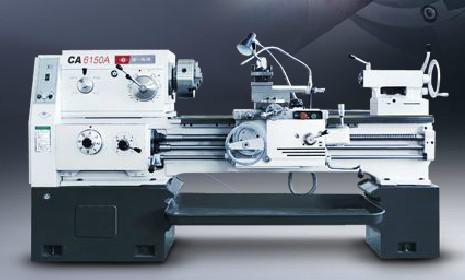
Milling machine
Types of milling machines
There are more than 70 kinds of milling machines according to the statistics of a machining technologist’s manual. The typical types are: instrument milling machine, cantilever and ram milling machine, gantry milling machine, plane milling machine, profiling milling machine, vertical lifting table milling machine, horizontal lifting table milling machine, bed milling machine and tools Milling machine, which is divided into many small categories, the number of different, and in our machinery industry is more commonly used vertical machining center and gantry machining center, almost where there are mechanical processing can see these two types of milling machine, we also for these two typical milling machine to do a general introduction and analysis.
The application scope of milling machine
Because there are too many types and structures of milling machines, and the application of a wide range of differences, so we point to the most commonly used vertical machining center and gantry machining center two typical milling machine to do a processing range. A. Vertical machining center (as shown in the figure above). The vertical machining center is actually a vertical CNC milling machine with tool library. Its main feature is that it uses multi edge rotary cutter for cutting, and can process plane, groove, tooth splitting parts, spiral surface and various curved surfaces, especially with the CNC technology In addition to all kinds of milling operations, it can also drill, boring, reaming, tapping and other composite processing of workpiece, which has a very broad practical and universal significance. B. Gantry machining center, compared with vertical machining center, gantry machining center is a composite application of CNC gantry milling machine and tool magazine. In terms of processing range, gantry machining center has almost all the processing capacity of ordinary vertical machining center, and can adapt to larger size in the shape and size of parts Tool processing, at the same time in the processing efficiency and processing accuracy also has a very big advantage, especially the practical application of five axis linkage gantry machining center, its processing range has also been greatly improved, which has laid the foundation for the development of China’s manufacturing industry to high-end direction.
Machining accuracy of milling machine
Vertical machining center: Flatness: 0.025/300 mm; coarseness: 1.6 RA / μ M.
2 μ M / 0.025 μ M / planeness.
The above machining accuracy is only a relative reference value, which does not mean that all milling machines meet the requirements. Many milling machines have certain up and down floating amount according to the specific requirements of manufacturers and the specific conditions of assembly. However, no matter how large the floating amount is, the machining accuracy value must meet the national standard If the processing accuracy requirements of such equipment do not meet the requirements of national standards when purchasing the equipment, the purchaser has the right to refuse acceptance and payment.
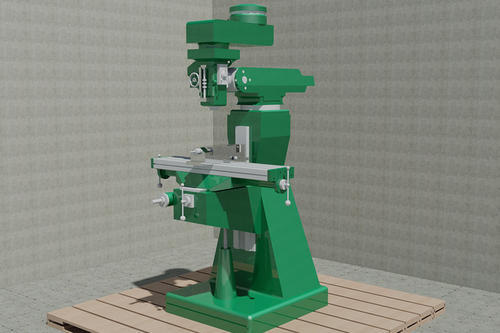
Planer
Types of planers
Compared with lathes and milling machines, the types of planers are much less. According to the statistics in the manual of machining technologists, there are about 21 kinds of planers. The typical types are: cantilever planer, gantry planer, shaper, edge and die planer. These categories are divided into many small types Planer products, and we have the highest utilization rate in the machinery industry, the most popular should be shaper and planer, as shown in the above figure, we will also do a basic analysis and introduction for these two typical planers.
The application scope of planer
The planing motion of planer is mainly the cycle and straight-line movement relative to the workpiece. The features of planing parts suitable for planing are plane, inclined plane and concave convex surface, and various curved surfaces can also be planed. However, due to the limitations of its own processing characteristics, the speed of planing is not too high Moreover, the planer with return stroke does not participate in the machining of parts, so it causes the loss of idle stroke and the machining efficiency is relatively low. At the same time, with the great technical improvement of CNC and automation of other processing equipment, planing processing method has been gradually replaced. From the perspective of many equipment upgrading trends, this type of machining machine has not been upgraded and innovated to a great extent Or stay in the original structure and layout, especially the vigorous development of vertical machining center and gantry machining center, as well as the continuous innovation of processing tools, which greatly replaces the machining advantage of planer in the processing range, making this kind of equipment with relatively low processing efficiency in a very awkward situation.
Machining accuracy of planer
Planing machining accuracy can generally reach the accuracy level of it10-it7, especially for the machining of long guide rail surface of some large machine tools, and even can replace grinding, which is the so-called “precision planing instead of fine grinding”.
Grinding machine
Types of grinding machines
Compared with the processing equipment of the previous models, there are more types of grinders. According to the statistics of a machinist’s manual, there are about 194 kinds of grinders, which can be divided into: instrument grinder, cylindrical grinder, internal grinder, grinder, coordinate grinder, guide grinder, cutter edge grinding machine Machine, surface and end grinder, crankshaft camshaft spline and roll grinder, tool grinder, superfinishing machine, internal honing machine, cylindrical and other honing machine, polishing machine, abrasive belt polishing and grinding machine. Tool edge grinding and grinding machine, indexable blade grinding machine, grinder, ball bearing ring groove grinder, roller bearing ring raceway grinder, bearing ring superfinishing machine, blade grinding machine, roller machining machine, ball machining machine, valve work There are many types of grinding machines, such as plug and piston ring grinding machines, automobile and tractor grinding machines, etc. because the classification and classification of grinders should be too wide, and many grinders are some specific equipment in specific industries, we would like to give a basic introduction to the grinding machines which are widely used in the machinery industry, In this article, we mainly choose cylindrical grinder and surface grinder to do a brief description.
The applicable range of grinding machine
Cylindrical grinder and cylindrical grinder are mainly used to process cylindrical surface, conical surface or the outer surface of other rotary body and shoulder end face. Because of their good processing adaptability and processing accuracy, they are widely used in machining some high-precision parts, especially in the final finishing of these parts The working procedure is widely used, which can not only ensure the geometric size of the processed parts to the maximum extent, but also achieve better surface finish requirements, so it is one of the indispensable equipment in the machining process.
B. Surface grinder, which is mainly used to process plane, step surface, side surface and other parts surface, is also widely used in the mechanical industry, especially in the processing of some high-precision parts surface, grinding machine is almost the last choice to ensure the processing accuracy, and it is also because of this, the surface grinder’s Use is a required course for most grinding operators. Even in some equipment assembly industries, the use of surface grinder is also the standard skill of assembly personnel, because the grinding work of various adjustment pads in the assembly process depends on the surface grinder.
Machining accuracy of grinder
The machining accuracy of cylindrical grinder: roundness and cylindricity: 0.003mm; surface roughness: 0.32ra/μ M. B. The machining accuracy of surface grinder: parallelism: 0.01/300 mm; surface roughness: 0.8 RA / μ M. From the above processing accuracy, we can also clearly see that compared with the previous lathe, milling machine, planer and other processing equipment, grinder can achieve higher behavior tolerance accuracy and surface roughness, so in the finishing process of many parts, grinder is widely used.
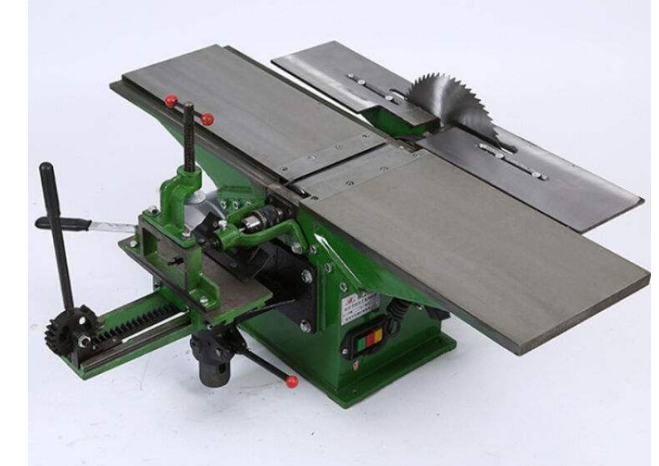
Boring machine
Types of boring machines
Compared with the previous several types of processing equipment, boring machine also belongs to a relatively small number of processing equipment. According to the statistics of a machining technologist’s manual, there are about 23 kinds, which can be divided into the following categories: deep hole boring machine, coordinate boring machine, vertical boring machine, horizontal milling boring machine, precision boring machine, etc Automobile and tractor repair boring machine and so on, among which the most common and commonly used boring machine in our machinery industry should be flying coordinate boring machine, the following we also do a brief introduction and analysis of some characteristics of the coordinate boring machine.
The applicable range of boring machine
There are various types of boring machines. We will give a brief introduction to the coordinate boring machine. You can learn other types of boring machine knowledge by analogy. The coordinate boring machine is a kind of precision machine tool with precise coordinate positioning device, which is mainly used for boring size, shape and position accuracy requirements High hole system can be used for drilling, reaming, reaming, end face cutting, milling, coordinate measurement, precision calibration and marking. It has a very wide and reliable processing characteristics. However, with the vigorous development of numerical control technology, especially the development of CNC vertical milling machine and CNC horizontal milling machine, boring machine, once the overlord of hole system processing equipment, is also in danger of being replaced gradually. Of course, it has an irreplaceable objective side, but no matter what the equipment is dying out or not Development, for the mechanical processing industry, is a kind of progress, is the progress of technology, but also the progress of our country’s manufacturing industry.
Machining accuracy of boring machine
The hole diameter accuracy of coordinate boring machine is generally it6-7, and the surface roughness is 0.4-0.8ra/μ M. But the boring machine processing has a very bad place, especially in the processing of cast iron parts, it is called a dirty ah, a white faced boy walked in, a Zhang Fei Li Kui jumped out, there is a feeling that the boring machine is completely different, so based on the reality of such a processing link Because, the possibility that this kind of equipment will be replaced in the future is also increasing, because who doesn’t care about their appearance? As soon as possible, many people do not, but we also need to pretend that we have a lot of appearance.
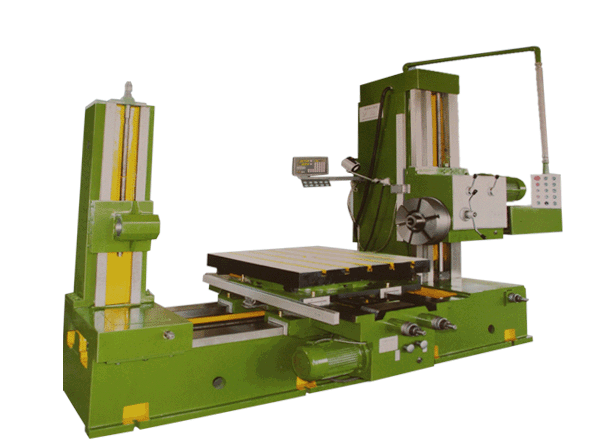
drilling machine
Types of drilling machines
This is the most widely used processing equipment in the machinery industry. If there is no such processing equipment, you are sorry to say that you are dry processing. According to the statistics of a machining technician’s manual, there are about 38 kinds of processing equipment, which can be classified into major categories It can be divided into the following types: coordinate boring drilling machine, deep hole drilling machine, radial drilling machine, bench drilling machine, vertical drilling machine, horizontal drilling machine, milling drilling machine, and central hole Drilling machine and so on, and we are most commonly used in the machinery industry is the radial drilling machine, but our mechanical processing industry standard, without this equipment, you basically can not do this industry, and because of this, we will focus on this kind of drilling machine.
The application scope of drilling machine
We are mainly talking about the rocker arm drill. For this kind of machine tool, I have only one sentence here, that is, drilling various types of holes. In addition to drilling, it can also realize reaming, reaming, reaming, tapping and other processing procedures. However, there is a big problem, that is, the positioning accuracy of the hole system is not high, so that In order to some parts with high accuracy of hole system position, we usually don’t choose drilling machine.
Machining accuracy of drilling machine
Because basically there is no machining accuracy to speak of, just drill a hole.
Wire cutting
For this kind of processing equipment of wire cutting, I didn’t have a lot of accumulation in this respect, and I didn’t do a lot of homework. Therefore, it is limited in the scope of use in the machinery industry, but it also has its unique existence value, especially for some special-shaped zero There are still some relative advantages in the cutting and processing of parts, but in view of its low processing efficiency and the vigorous development of laser machines, the WEDM processing equipment is gradually walking on the edge of the eliminated industry. In fact, my company has a large number of WEDM equipment, but because it belongs to the blanking process, the attention paid to this kind of equipment is not high. My overall impression is that it is “dirty, slow and annoying”. Many operators are not willing to operate this kind of equipment, especially with various numerical control With the vigorous application of equipment and the gradual maturity of automation technology, the advantages of this kind of equipment have been a little bit “gone”. Of course, it will continue to exist in a certain period of time and within a certain range. This is certainly a necessity, but I also believe that the value of its existence will become smaller and smaller. Personally, I’m happy to see the demise of this device, because it has no advantages in terms of processing efficiency or working environment.
